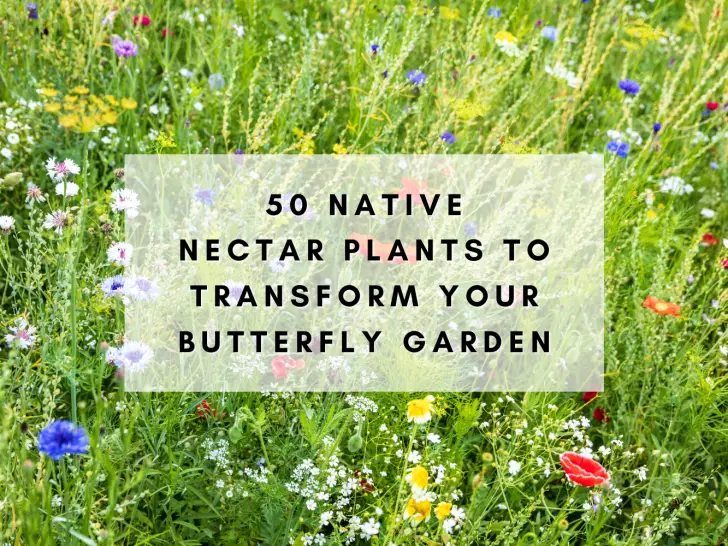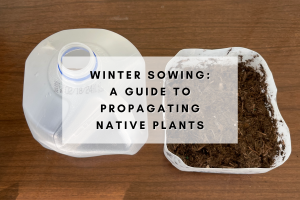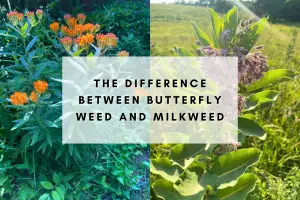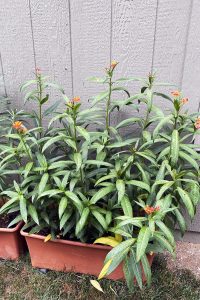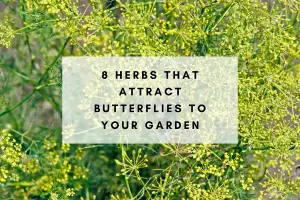Creating a butterfly garden isn’t just about adding vibrant colors; it’s about creating a space that supports the entire life cycle of butterflies and other pollinators.
One of the key elements in attracting and sustaining butterflies is providing a diverse array of nectar-rich plants.
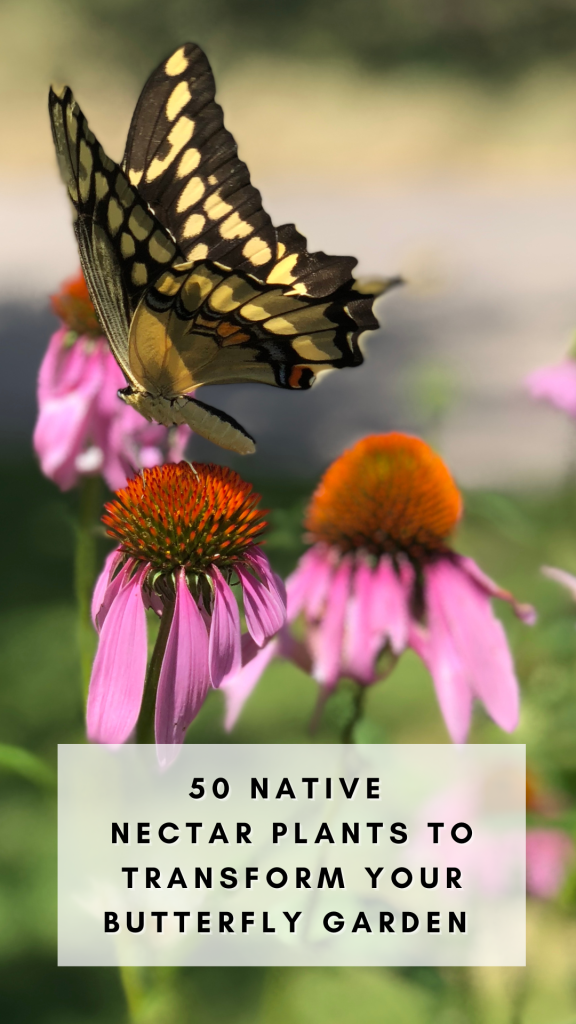
In this guide, we’ll explore 50 native nectar plants to add to your garden whether your a beginner or a seasoned green thumb.
50 Native Nectar Plants for Your Butterfly Garden
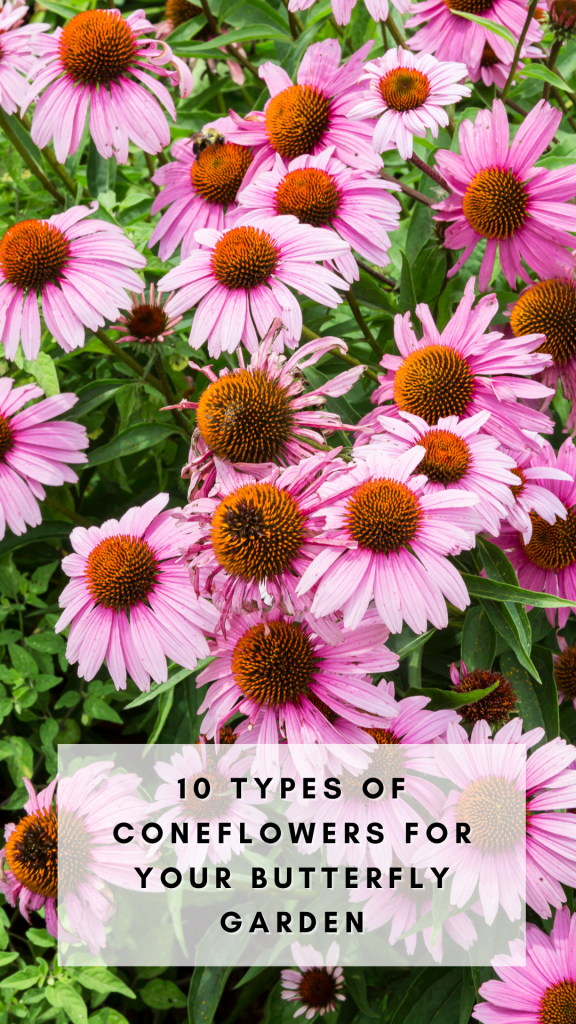
Coneflowers (Echinacea spp.)
Coneflowers (Echinacea spp.) are the unsung heroes of a vibrant butterfly garden, bringing both beauty and ecological significance to the landscape.
Their daisy-like blooms, often in hues of pink, purple, or white, not only add a pop of color but also act as a magnet for a variety of butterfly species.
Frequent visitors include Monarch butterflies, which rely on the nectar of coneflowers during their journey. Additionally, coneflowers serve as crucial nectar sources for other butterfly varieties, such as the Eastern Tiger Swallowtail and Painted Lady.
Beyond their visual appeal, these native plants play a dual role by providing sustenance for adult butterflies and serving as essential host plants for caterpillars like the silvery checkerspot butterfly, supporting the complete life cycle of many different pollinators.
Easy to cultivate and adaptable to various soil conditions, coneflowers prove to be an indispensable and low-maintenance addition to any butterfly garden, ensuring that both novice and seasoned gardeners can effortlessly contribute to the well-being of beneficial insects and wildlife.
- Purple Coneflower (Echinacea purpurea):
Benefits: A classic favorite, its daisy-like blooms attract a variety of butterflies, including the Eastern Tiger Swallowtail and Monarch. - Pale Purple Coneflower (Echinacea pallida):
Benefits: A slender beauty, perfect for attracting butterflies like the Orange Sulphur and Eastern Tailed-Blue. - Narrow-Leaved Coneflower (Echinacea angustifolia):
Benefits: A prairie native, this coneflower is a preferred nectar source for Fritillary butterflies. - Tennessee Coneflower (Echinacea tennesseensis):
Benefits: Endemic to the southeastern U.S., it draws in species like the Eastern Tiger Swallowtail. - Smooth Coneflower (Echinacea laevigata):
Benefits: A wetland specialist, it attracts butterflies like the Great Spangled Fritillary. - Ozark Coneflower (Echinacea ozarkensis):
Benefits: With striking blooms, this coneflower is frequented by the Silver-Spotted Skipper and Eastern Tailed-Blue. - Purple Coneflower (Echinacea sanguinea):
Benefits: Attracts a diverse range of butterflies, including the Eastern Tiger Swallowtail and Painted Lady. - Rough Coneflower (Echinacea paradoxa):
Benefits: A yellow coneflower that appeals to butterflies like the Eastern Tiger Swallowtail. - Wavy-Leaf Coneflower (Echinacea simulata):
Benefits: An attractive coneflower variety for various butterflies, including the Eastern Tiger Swallowtail. - Yellow Coneflower (Echinacea flava):
Benefits: Its yellow blooms are a beacon for butterflies like the Eastern Tiger Swallowtail and Variegated Fritillary.
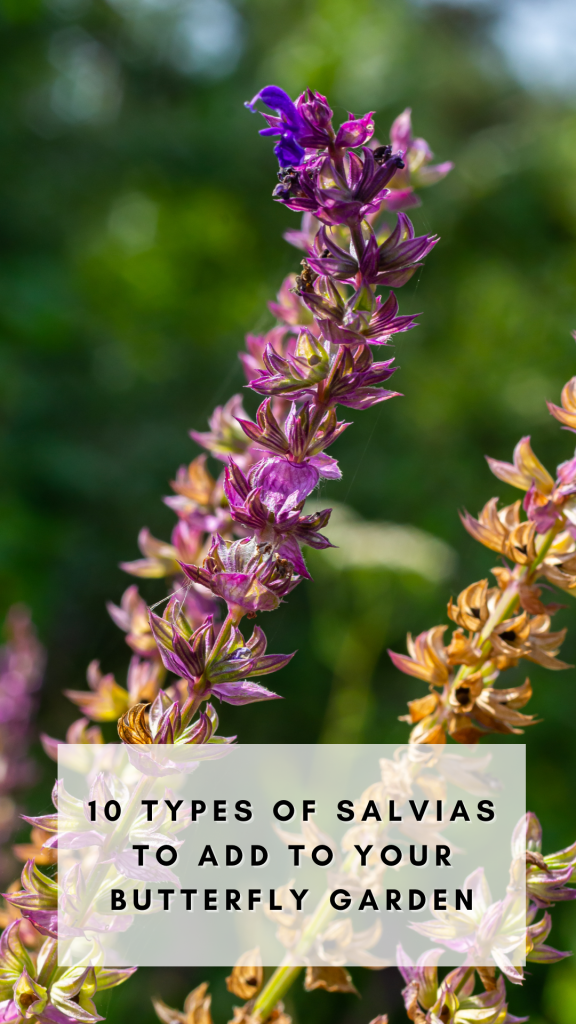
Salvias
Salvias (Salvia spp.) are like the buzzing epicenter of a bustling butterfly garden, attracting an array of these colorful pollinators with their vibrant, tubular blooms and aromatic foliage.
Known for their resilience and adaptability, salvias provide nectar that appeals to numerous butterfly species, including Swallowtails, Monarchs, and Painted Ladies.
Their extended blooming periods, especially varieties like Black and Blue Salvia or Autumn Sage, ensure a continuous supply of nectar, making them a reliable fuel station for butterflies throughout the season.
Additionally, salvias add a touch of elegance and structure to the garden with their upright stems and diverse color palette, creating a visually appealing landscape that is both inviting and beneficial.
With their easy care and ability to thrive in various climates, salvias make an excellent choice for any butterfly garden.
- Black and Blue Salvia (Salvia guaranitica):
Benefits: Known for its vibrant blue blooms, it attracts butterflies like the Pipevine Swallowtail. - Autumn Sage (Salvia greggii):
Benefits: A favorite for its continuous blooming, attracting butterflies such as the Monarch and Painted Lady. - May Night Salvia (Salvia nemorosa ‘May Night’):
Benefits: With deep purple spikes, this salvia is a magnet for butterflies like the Eastern Tailed-Blue and Common Buckeye. - Scarlet Sage (Salvia coccinea):
Benefits: Its vivid red flowers draw in butterflies like the Gulf Fritillary and Ruby-Throated Hummingbirds. - Victoria Blue Salvia (Salvia farinacea ‘Victoria Blue’):
Benefits: A reliable bloomer, this salvia attracts butterflies such as the Swallowtails and Red Admirals. - Hot Lips Salvia (Salvia microphylla ‘Hot Lips’):
Benefits: Known for its unique bi-color flowers, it appeals to butterflies like the American Lady and Painted Lady. - Meadow Sage (Salvia nemorosa):
Benefits: A hardy and reliable sage variety attracting butterflies like the Cabbage White and Great Spangled Fritillary. - Mealycup Sage (Salvia farinacea):
Benefits: Loved by the Eastern Tiger Swallowtail, this sage offers continuous blooming. - Purple Majesty Salvia (Salvia guaranitica ‘Purple Majesty’):
Benefits: A striking purple variety attracting butterflies like the Spicebush Swallowtail. - Rose Sage (Salvia involucrata ‘Rose Queen’):
Benefits: A tall sage with rose-pink blooms, it’s a favorite of butterflies like the Variegated Fritillary.
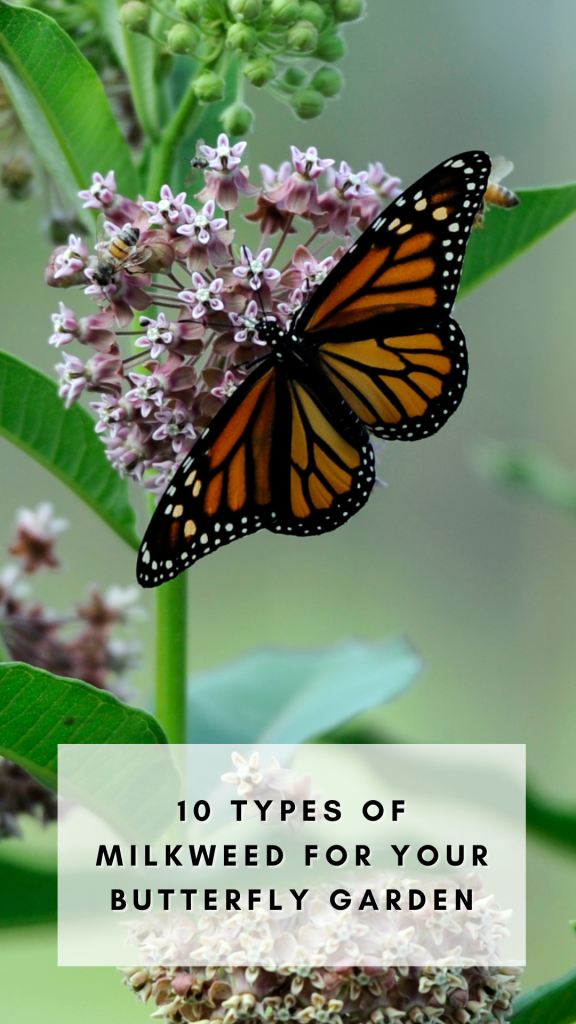
Milkweeds (Asclepias spp.)
Milkweed (Asclepias spp.) is the cornerstone of a thriving butterfly garden, playing a vital role in the life cycle of monarch butterflies and beyond. With its distinctive clusters of intricate flowers, milkweed not only adds a splash of beauty to the garden but is also a critical host plant for monarch caterpillars.
Female monarch butterflies lay their eggs exclusively on milkweed, and upon hatching, the caterpillars feed voraciously on its leaves.
Beyond monarchs, milkweed attracts a variety of other butterfly species, making it a hub of biodiversity. Its abundant nectar-rich blooms serve as a valuable fuel source for adult butterflies, creating a haven for pollinators.
As a native plant, milkweed is hardy, adaptable, and easy to grow, making it a must-have for any native butterfly garden.
By cultivating milkweed, gardeners contribute not only to the beauty of their outdoor space but also to the conservation of essential butterfly habitats.
- Common Milkweed (Asclepias syriaca):
Benefits: Essential for the Monarch butterfly, it’s a critical host plant for their caterpillars. - Butterfly Milkweed (Asclepias tuberosa):
Benefits: With vibrant orange blooms, it attracts butterflies like the Eastern Tiger Swallowtail and Great Spangled Fritillary. - Swamp Milkweed (Asclepias incarnata):
Benefits: Thriving in wetter conditions, it attracts butterflies like the Monarch and Red Admiral. - Whorled Milkweed (Asclepias verticillata):
Benefits: A delicate milkweed variety attracting butterflies such as the Monarch and Eastern Tiger Swallowtail. - Green Comet Milkweed (Asclepias viridiflora):
Benefits: Uniquely green blooms make it a distinctive choice for attracting butterflies like the Falcate Orangetip. - Aquatic Milkweed (Asclepias perennis):
Benefits: Thriving in moist areas, it attracts butterflies like the Monarch and Eastern Tiger Swallowtail. - Showy Milkweed (Asclepias speciosa):
Benefits: Its large, pink clusters attract butterflies like the Monarch and Painted Lady. - Mexican Whorled Milkweed (Asclepias fascicularis):
Benefits: A western native, it draws in butterflies such as the Western Tiger Swallowtail. - Clasping Milkweed (Asclepias amplexicaulis):
Benefits: Recognizable by its clasping leaves, it attracts butterflies like the Falcate Orangetip. - Antelope Horns Milkweed (Asclepias asperula):
Benefits: With distinctive horns, this milkweed attracts butterflies like the Monarch and Queen.
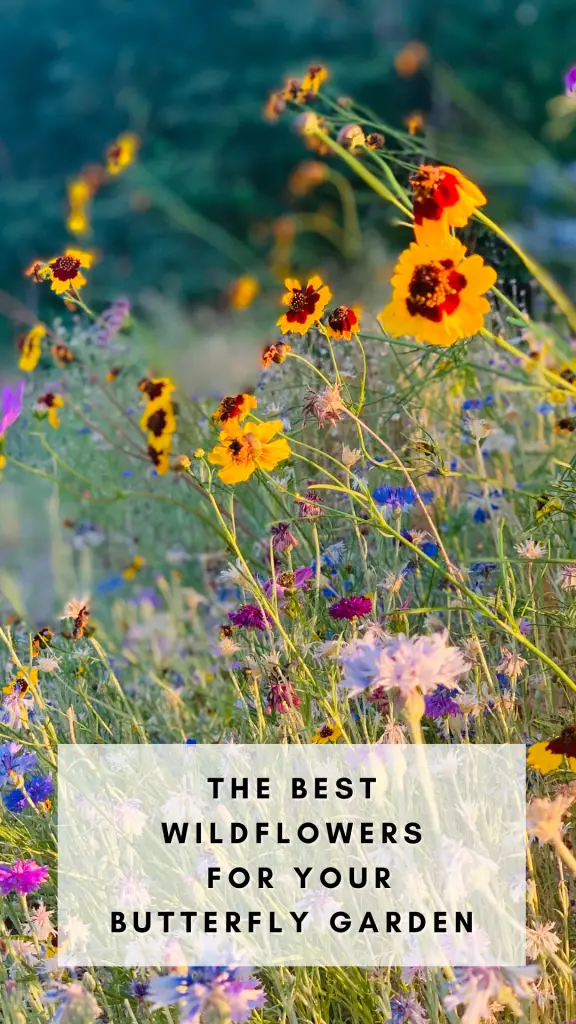
Wildflowers (Various Genus and Species)
Wildflowers are the untamed, free-spirited stars of a butterfly garden, contributing a sense of natural charm and attracting a diverse array of insects and pollinators.
These native blooms, often characterized by their whimsical shapes and vibrant hues, provide an abundant source of nectar for butterflies.
Their allure extends beyond mere aesthetics, as wildflowers are essential for supporting the complete life cycle of these enchanting insects.
From asters to coreopsis, many wildflowers act as both host plants for caterpillars and a rich nectar source for adult butterflies.
Wildflowers not only add a touch of effortless grace to the garden but also contribute to the overall health and biodiversity of the ecosystem.
Their low-maintenance nature and adaptability make them an ideal choice for any butterfly garden.
- Bee Balm (Monarda spp.):
Benefits: Loved by both butterflies and hummingbirds, it’s a favorite of the Eastern Tiger Swallowtail. - Aster (Symphyotrichum spp.):
Benefits: Late-season blooms make asters a crucial nectar source for butterflies like the Painted Lady. - Joe-Pye Weed (Eutrochium spp.):
Benefits: With its tall, feathery clusters, it attracts butterflies like the Eastern Tiger Swallowtail. - Blazing Star (Liatris spp.):
Benefits: Loved by the Monarch butterfly, it provides a late-season nectar source. - Columbine (Aquilegia spp.):
Benefits: Unique, spurred flowers attract butterflies like the Eastern Tiger Swallowtail. - Coreopsis (Coreopsis spp.):
Benefits: With bright, daisy-like flowers, coreopsis is a favorite for butterflies like the Clouded Sulphur. - Gaillardia (Gaillardia spp.):
Benefits: Also known as Blanket Flower, it attracts butterflies like the Painted Lady. - Goldenrod (Solidago spp.):
Benefits: A late-season bloomer, goldenrod is crucial for butterflies like the Clouded Sulphur. - Ironweed (Vernonia spp.):
Benefits: Loved by butterflies like the Great Spangled Fritillary, ironweed adds height to your garden. - Phlox (Phlox spp.):
Benefits: A fragrant option, phlox attracts butterflies like the Tiger Swallowtail.

Penstemons (Penstemon spp.) and Goldenrods (Solidago spp.)
Penstemons (Penstemon spp.) and Goldenrods (Solidago spp.) are dynamic additions to a butterfly garden, each offering unique contributions to the flourishing ecosystem.
Penstemons, with their tubular, often brightly colored flowers, serve as a visual delight for both gardeners and butterflies alike.
The nectar-rich blossoms make them a favorite pitstop for various butterfly species, including the Eastern Tailed-Blue and Silver-Spotted Skipper. Their versatility in different climates and soil conditions makes penstemons a reliable choice for sustainable gardens.
On the other hand, Goldenrods bring a late-season burst of color to the landscape, with their feathery plumes of tiny, golden-yellow flowers.
Contrary to a common misconception, goldenrods are not the culprits behind seasonal allergies but rather valuable nectar sources for butterflies such as the Clouded Sulphur and Orange Sulphur.
Thriving in sunny locations, these hardy perennials add both aesthetic appeal and ecological value to the garden.
Together, Penstemons and Goldenrods create a dynamic duo, offering continuous blooms and supporting the intricate life cycles of butterflies throughout the seasons.
Whether in sun-drenched borders or mixed perennial beds, these native plants enhance the beauty and biodiversity of any butterfly-friendly landscape.
- Beardtongue (Penstemon digitalis):
Benefits: Attractive to butterflies like the Eastern Tailed-Blue, beardtongue adds vertical interest. - Foxglove Beardtongue (Penstemon digitalis ‘Husker Red’):
Benefits: Dark foliage adds a unique touch while attracting butterflies like the Silver-Spotted Skipper. - Downy Goldenrod (Solidago puberula):
Benefits: A compact goldenrod variety, it attracts butterflies like the Clouded Sulphur. - Zigzag Goldenrod (Solidago flexicaulis):
Benefits: Loved by butterflies like the Orange Sulphur, this goldenrod thrives in shaded areas. - Stiff Goldenrod (Solidago rigida):
Benefits: Tolerant of various soils, it attracts butterflies like the Great Spangled Fritillary. - Showy Goldenrod (Solidago speciosa):
Benefits: Attracting butterflies like the Painted Lady, showy goldenrod provides a burst of color. - Elm-leaved Goldenrod (Solidago ulmifolia):
Benefits: Recognizable by its elm-like leaves, it attracts butterflies like the Pearl Crescent. - Blue-stemmed Goldenrod (Solidago caesia):
Benefits: Preferring partial shade, this goldenrod attracts butterflies like the Eastern Tailed-Blue. - Seaside Goldenrod (Solidago sempervirens):
Benefits: Adaptable to coastal conditions, it attracts butterflies like the American Lady. - Early Goldenrod (Solidago juncea):
Benefits: An early bloomer, it attracts butterflies like the Orange Sulphur.
Tips for Success:
- Research Local Varieties:
Choose nectar plants native to your region, as they are adapted to local climate conditions and will better support native butterfly species. - Provide Continuous Bloom:
Ensure a succession of blooming plants to provide a consistent nectar source throughout the butterfly season. - Include a Variety of Colors:
Butterflies are attracted to a range of colors. Incorporate plants with blooms in different hues to appeal to a diverse array of species. - Plant in Clusters:
Grouping plants together makes it easier for butterflies to find them, creating a more attractive and functional garden. Planting a container butterfly garden is also an option if you don’t have much yard space. - Avoid Pesticides:
Pesticides can harm butterflies at all stages of their life cycle. Choose natural pest control methods to maintain a healthy and thriving garden.
Transforming your garden into a haven for butterflies is not only visually rewarding but also contributes to the preservation of these vital pollinators.
By incorporating a variety of native nectar plants, you create a sustainable environment that supports the entire life cycle of butterflies.
Whether you have a small balcony or a sprawling backyard, the simple act of planting native nectar plants can make a significant impact on the health of local butterfly populations.

